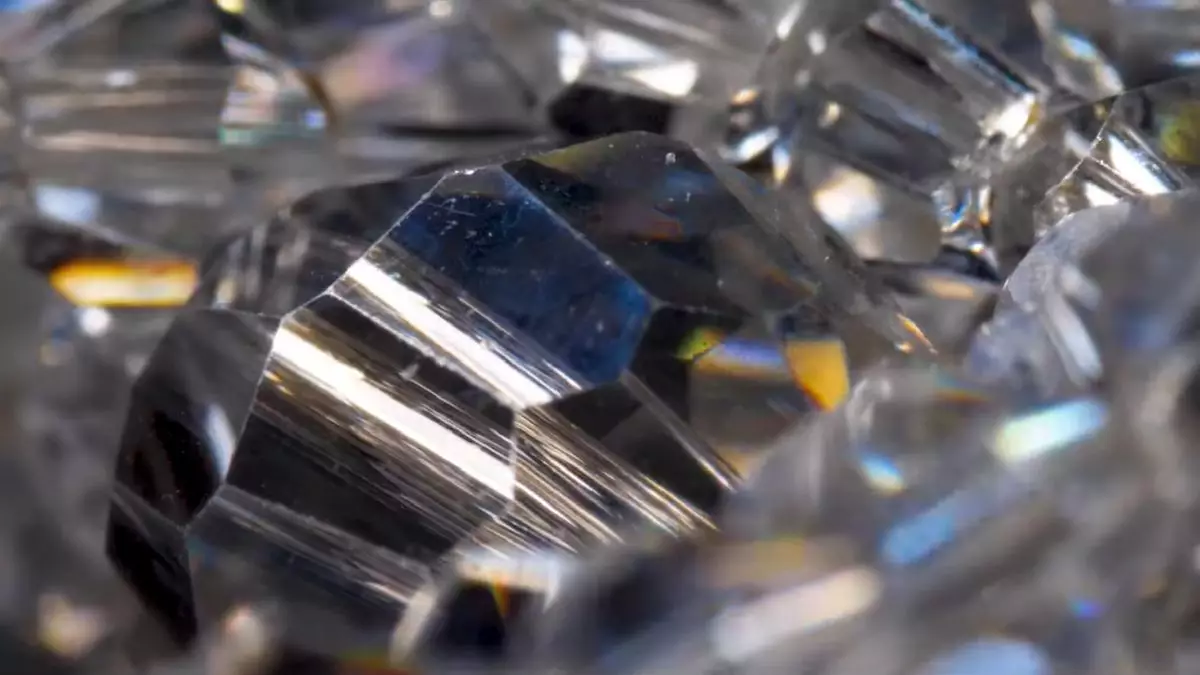For centuries, diamonds have dazzled us not just in jewelry but in culture, from Hollywood heist movies to the extravagant displays in music videos. Their allure often overshadows the practical and innovative scientific applications that diamonds can offer, particularly in the realm of technology. Recently, Akash Systems has emerged as a pioneering force in this area, aiming to integrate synthetic diamonds into the semiconductor industry. With their recent announcement regarding significant funding through the CHIPS Act, their venture could potentially revolutionize chip cooling technology and pave the way for advancements in various fields, including satellite communications and computing.
Akash Systems is not merely proposing a fanciful idea; they’ve crafted a novel approach that merges synthetic diamonds with conductive materials, particularly Gallium Nitride (GaN). Diamonds possess extraordinary thermal conductivity, being approximately five times better than traditional copper. This characteristic makes them optimal for dissipating heat, a major concern in modern electronics where device overheating can lead to performance throttling and even hardware failures. However, diamonds are not electrical conductors, which means that the integration process has to strike a delicate balance, offering both electrical capability and thermal efficiency.
The promise of this technology is enticing, with Akash Systems claiming significant enhancements such as a reduction of chip hot spot temperatures by 20°C, decreased fan operation by up to 50%, and doubled server longevity. Additionally, a capacity for increased overclocking suggests that performance could be boosted without compromising safety. While skepticism is warranted—especially given the ambitious nature of these claims—the potential benefits could reshape how we think about chip performance and cooling solutions.
The benefits of diamond-cooled semiconductors extend beyond mere computational performance. In the field of satellite communications, Akash Systems points to a potential for data rates that are five to ten times faster than current technologies. This increased efficiency is particularly crucial in an era of ever-growing data requirements, where satellites must communicate large volumes of information swiftly and reliably. Furthermore, the compact design enabled by the cooling properties of diamond materials could lead to a 50% reduction in the size of components—ideal for weight-sensitive satellite platforms.
These innovations could not only enhance the efficiency of existing technologies but also open the door for new applications, as devices become smaller, lighter, and more powerful. As we continue to embed technology deeper into daily life, the need for reliable and efficient systems becomes paramount.
While the prospects of diamond cooling technology are exciting, there are substantial hurdles that Akash Systems must navigate. The recent acknowledgment of funding through a “non-binding preliminary memorandum of terms” points to a positive outlook, but the journey from concept to implementation is fraught with challenges. Broadly, the fate of the CHIPS Act funding hangs in the balance of political support and the complexities of federal bureaucracy. With the impending transitions in governmental leadership, uncertainty looms, especially as new administrations often reassess the priorities of existing funding programs.
Nevertheless, the establishment of this funding memorandum is a crucial first step. It demonstrates recognition within the industry that innovative materials can lead to transformative improvements in technology—not merely a cosmetic upgrade but a fundamental shift in how devices operate at a thermal and electrical level.
A Shiny Future in the Tech World
While we have yet to see diamond-cooled semiconductors in action, the implications of such technology are profound. If Akash Systems can deliver on its ambitious promises, we may witness a new era of computing and satellite technology. The dream of glimmering chips that not only perform better but could potentially revolutionize efficiency might one day transcend the confines of science fiction. Until then, the prospect serves as a reminder of the ongoing convergence between traditional luxury materials and cutting-edge technology, heralding a future where diamonds aren’t just for adornment but also serve a more functional role in our everyday lives.

